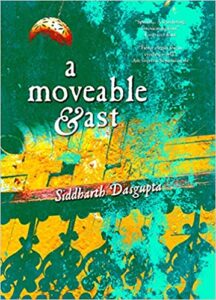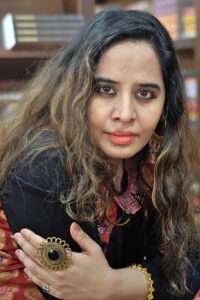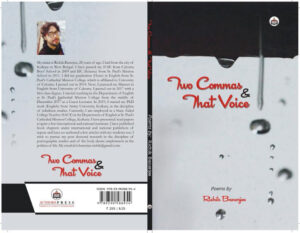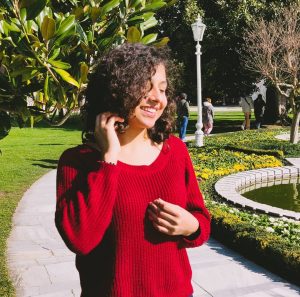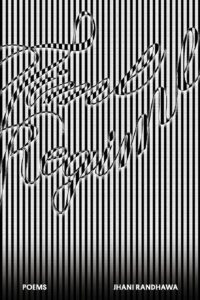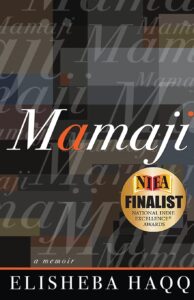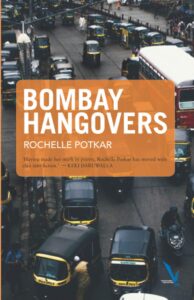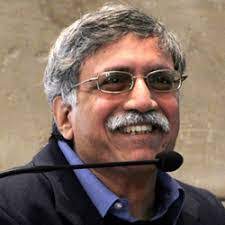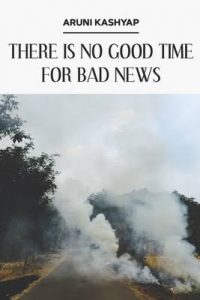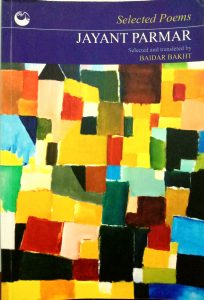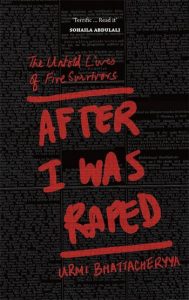Reviewed by Tanushree Gupta

“We are called aadhabaasi (adivasi) because we are aadha vasi, which means half humans and you people are pura vasi, complete humans”—these words spoken by an adivasi resident of Madhya Pradesh are reminiscent of the fact that an independent India, has failed to understand the Adivasi map of the world and their conceptualisation of freedom and liberty. Shekhar’s book, The Adivasis Will Not Dance, a collection of ten short stories testifies to the fact that Tagore’s (1910) “narrow domestic walls” seems to be enjoying the pride of reaching greater heights and Gramsci’s “subaltern classes” continue to be silenced.
This book asks uncomfortable questions. Does the need for development supersede the rights of the Adivasis? Does prostitution make you a smeared individual, undeserving of finding love. What should one choose between morality and survival? Contradicting the allegations that the book is politically inspired it’s in fact one that unapologetically sensitises the reader about the realities of the suppressed, whose voices are silenced by illusionary promises and irrational incarceration. “Art is never being chaste…Where it is chaste, it is not art,” says Picasso, true to that, the author says, “What is the point of just liking a book…They should bring about some change” (Shekhar 2016).
The stories in The Adivasis Will not Dance aren’t just musings upon the helplessness of the Adivasis. That would make a boring piece of fiction. It is marked by the erratic paternalism of the state, avaricious private interest, and incessant corruption. Devoid of a glossary, because the author believes they are “destructive”, these stories brim with Santhali voices in their colloquial language. Brutality being an endless confrontation when driven by superstition is aptly illustrated in the story ‘Baso-Jhi,’ a woman who was called a “dahini” by her own sons. In the story, “Desire Divination and Death” comes Subhashini’s choice to stay with her ill son or going to work. “Merely a Whore” is the story of prostitute, who falls in love with one of her clients. Faced with immense misery due to humiliation and rejection this story is a benchmark for every woman who crumbles at the mere sight of grief (Raman 2019). An acerbic love triangle ‘Blue Baby’ burns with flames of obsession that challenges the present-day idea of romance. “Getting Even” marks the chilling encounter of human trafficking while “Eating with the Enemy” takes you through the miserable life of Sulochana, a poor adivasi trying to cross the hurdles of life. These stories are in stark contrast to the “Disneyfied” noble savages and promiscuous strumpets that populate the non-indigenous imagination (Srivastav 2017).
—“‘Saali! You Santhal women are made for this only.’… At one point the policeman squeezes her breasts out of her blouse. He bites them and sucks on her nipples. That hurts.’” (41).
“November is a Month of Migration” is undoubtedly one of the most courageous stories in the entire book. Unleashing the struggles of poverty, a young girl is forced to choose between survival and morality. Is it ethical to sell your body for the sake of “two pieces of cold bread pakora and a fifty-rupee note” (42). The depiction of sex here is painful, infuriating many readers who have criticised the author for objectifying the Adivasi women. “She has to do nothing, only spread her legs and lie quiet” (41). Her silence will make you flinch, probably shed a few tears as well. Quite naturally this story reminded me of the story of an Adivasi child in Ratlam district in northwest Madhya Pradesh, who had fallen severely ill after drinking insecticide to stave off her hunger (Nilsen, 2019). Comprising about 8 percent of India’s population, the Adivasis account for a fourth of the population living in the poorest wealth decile (Das et al.). Poverty among the Adivasis is a hardcore reality probably as hardcore as the sex depicted here. The sex may offend many, but to emphasise on the literal words of the explicit content and ignore the pockets of exploitation stocked in the short story will be an ideal representation of what we have been doing for the past seven decades- ignoring the plight of the Adivasis.
The first short story “They Eat Meat!” is about Panmuni-jhi and her husband Biram-Soren. Filled with spices of discrimination, vegetables of acceptance and boiled in the oil of racism, this story of food and meat will take you through the streets of Vadodara through the eyes of an Adivasi. Biram-Soren is informed by his landlord that he must refrain from consuming meat as the people in the city “believe in purity” (6). One is forced to question how fragile this purity is, that it is tarnished by a simple act of consuming meat. They are abstained from revealing their identity. After all, no one prefers to live beside a tribal family. This story will take you back to the incident of Akhlaq in Delhi, where 200 men killed him merely on suspicion of eating beef. What stays with the reader is the bigotry and prejudice towards food. There is “purity” but no “equality.” Undoubtedly, democracy treats everyone equally but does not make everyone equal (Modi 2019). The crinkle in the nose at the mere smell of meat, and the cravings for the “simple sin of an egg” (12), will make you rethink your privilege of belonging to a community where you have the freedom to eat as you wish and cook as you like. Imagine being deprived of your daily dose of fish and chicken, after all one needs to feed the bigotry and prejudice hidden in the folds of their subconscious, we can’t let that starve, it’s the hallmark of our intelligence.
–“I am sixty years old and, sitting in this lockup after being black and blue.” (176)
If Marx’s theory on the “Law of Increasing Poverty” had a face, it would be this story, where the rich continue to get richer, and the poor remain in the dirt of poverty. The cover story of the book “The Adivasis Will not Dance” is a moving story of Murmu, a troupe-master, and the wretched condition of his people after he is beaten up by the police for protesting against the state-sponsored theft of Santhal land for a corporation. Inspired by the protests in Jharkhand by the Adivasis against the Jindal Power Plant, this story exemplifies the themes of displacement, greed, and development. The government’s 10th Five-Year Plan noted that between 1951 and 1990, 21.3 million people were displaced; 40 percent of them, were tribal people (Das et al.). Let’s face it. With lack of public representation, barely any public sympathy and physical remoteness from civilisation, snatching lands from these communities is a cakewalk for the Indian elites. Mumru’s comments throughout the story will send cold shivers down your spine. His attitude will remind you of Bhagat Singh’s “you will not be able to crush my spirit” fever. This story is a powerful narrative of the multiple forms of atrocities committed towards Adivasis: dispossession from their land; helplessness against the might of mining companies; the venality of politicians and the hollowness of middle-class sympathies (Srivastava 2017).
If the story of Eklavya was to be rewritten in a 21st century India, undoubtedly, the capitalists would play the role of Arjun, the government would be the revered Dronacharya and Eklavya, the estranged, rejected student, would be the Adivasis.
These stories shed light on the fact that an independent India has failed its Jaipal Singh. I point towards the faith of Jaipal Singh when he remarked during the debate on the Objectives Resolution, “As a Jungli, as an Adivasi…I take you all at your word that now we are going to start a new chapter, a new chapter of independent India where there is equality of opportunity, where no one is neglected” (Singh, 1946). The promise has not been kept. Let alone equality, we have corroded their dignity, land, reputation and reduced them to utter destitution. More than anything, Shekhar deserves a bouquet of gratitude from all of us, for saying it out there once and for all, The Adivasis will not Dance. This book takes me back to Spivak’s famous essay, “Can the subalterns speak?” This book will urge us to think along the same lines, but along a slightly different tangent—why can the subalterns not speak? This book is a commentary on the lives of the Adivasis, forgotten in the mainstream media and are victims of a systematic pattern of ignorance, which tells us loudly and clearly, that in India today, Adivasi lives don’t matter.
References
(* indicates a primary source)
“Adivasis” (2021). Minority rights Group International. https://minorityrights.org/minorities/adivasis-2/ Constituent Assembly Debates, Volume I, pp 14.
Dey, Debatra (2017), “Adivasi has no reason to Dance”, [Online: web] Accessed 2 December 2017 URL: http://www.mainstreamweekly.net/article7627.html
Modi, S. (2019), “How democracy has failed India’s adivasis”, [Online: web] Accessed 13 May 2019 URL: https://www.firstpost.com/india/how-democracy-has-failed-indias-adivasis-6623861.html
Nilsen, A. (2019), “Adivasi Lives Don’t Matter”, Online: web] Accessed 16 Jan. 2019 URL: https://thewire.in/rights/adivasi-lives-dont-matter.
Raman, M. (2019), “Lessons In Empathy From ‘The Adivasi Will Not Dance’”, [Online: web] Accessed 22 July 2019 URL: https://www.thecuriousreader.in/essays/the-adivasi-will-not-dance/
Shekhar, Hansda (2016), “Review: Hansda Shekhar’s The Adivasi Will Not Dance is a no-holds-barred account of life on the margins”, The Hindu, New Delhi, 02 December 2016.
*Shekhar, H. (2015), The Adivasis will not dance,. New Delhi: Speaking Tiger.
Srivastava, Sanjay (2017), “What the ban on The Adivasi Will Not Dance tells us about India’s political life”, Hindustan Times, New Delhi, 14 August 2017.
World Bank (2011), Indigenous Peoples Country Brief, India.


The author is a law student in Jindal Global Law School. Hailing from the eastern flanks of the country, she grew up amidst the tea gardens of Assam. Her interests range from reading, playing the Piano to listening to Beethoven.
![]()








